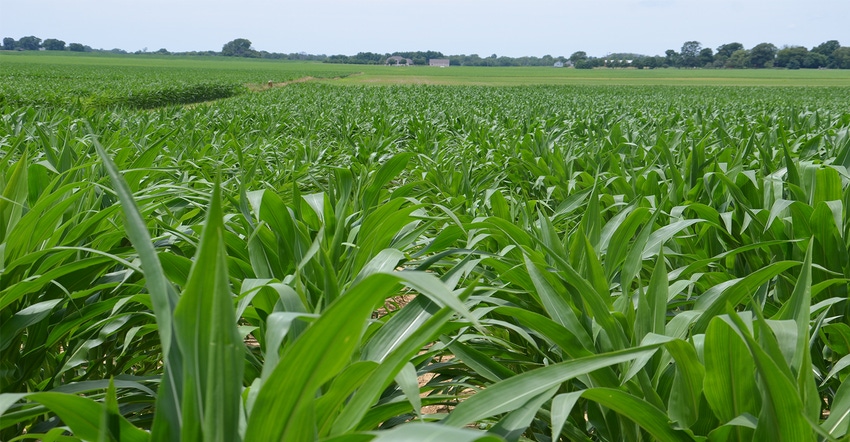
The whole purpose of Corn Watch ’17 is to follow the progress of one field and see if it points out things that might be happening in your fields. That’s especially tough this year, since corn is at so many different growth stages, depending primarily upon planting date.
Dave Nanda scouted the Corn Watch ’17 field when it was about waist-high. Most plants were at the V10 to V11 stage, not far from tasseling. Nanda is an independent crops consultant. Corn Watch ’17 is sponsored by Seed Genetics-Direct, Washington Court House, Ohio.
Key observations
Here are five things Nanda found in the field because he had his eyes wide open!
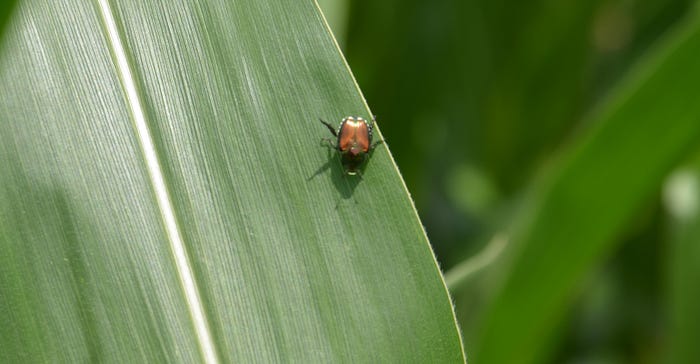
1. Beetles can visit cornfields. The beetle on this leaf is a Japanese beetle. Leaf feeding typically isn’t an issue with Japanese beetles in corn, Nanda notes. As long as they’re just crawling on corn leaves, they’re not a threat.
However, if there are enough beetles in a field, they can clip silks during pollination and reduce kernel set. Either rootworm beetles or Japanese beetles can warrant treatment if silks are clipped to within half an inch of the tip and pollination is still in full swing.
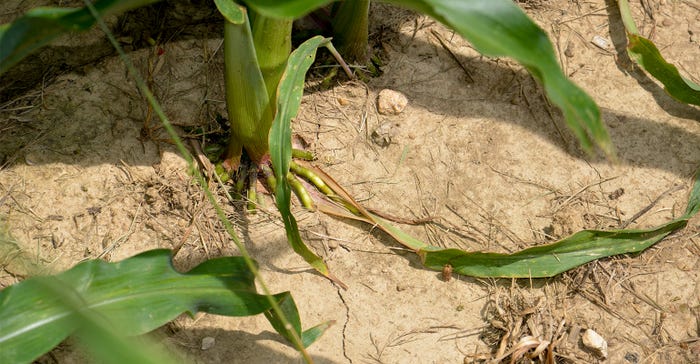
2. Brace roots take hold. Brace roots were already anchored into the ground, like these, or just growing out and ready to enter the ground. It’s normal — and positive — for brace roots to grow out and take hold, Nanda says. They help give the plant stability as the season progresses.
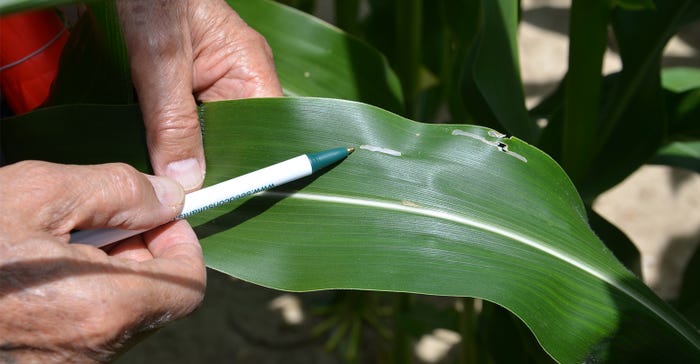
3. Flea beetles leave evidence behind. The “window-paning” Nanda found on this corn leaf was most likely cause by flea beetles, the crop consultant says. The feeding damage often occurs relatively early in the season, and isn’t usually important in and of itself. However, flea beetles can transmit Stewart’s wilt through feeding on leaves. It’s a foliar disease that isn’t common, but can show up if enough flea beetle feeding occurs earlier in the year.
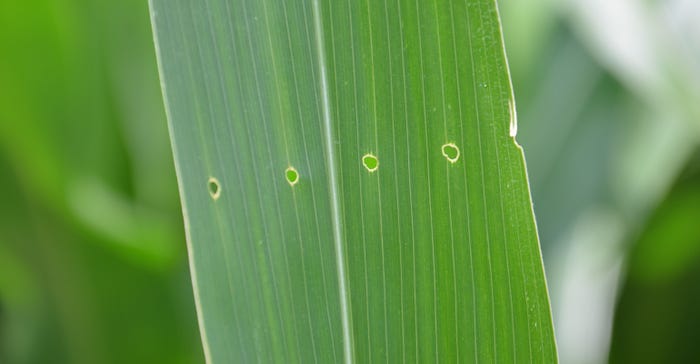
4. Corn borer larvae create feeding holes. One corn borer larva made this classic set of four holes in a corn leaf. How can one insect chew its way to making four evenly spaced holes? “The feeding occurred while the leaves were still wrapped up in the whorl,” Nanda explains. “When the leaves unfurled, there was a hole each place the larva ate its way through the whorl.”
About 20% of the plants in one of the two hybrids in the Corn Watch ’17 field were affected by corn borer feeding, Nanda says. Only 3% of the plants of the other hybrid were affected. That’s because the one hybrid did not contain the GMO trait for corn borer control, he observes.
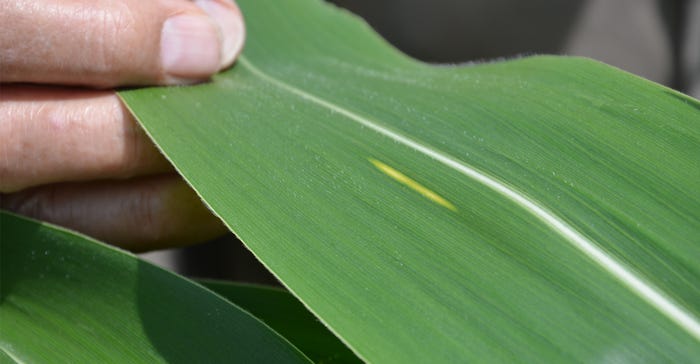
5. Unusual things can appear for no apparent reason. Not everything you see while scouting is a problem, Nanda emphasizes. The yellow mark on this leaf is not a disease lesion, he says. He was looking for beginning lesions of foliar diseases at this growth stage, but didn’t find any in this field.
“We don’t always know what causes a spot like this on a leaf, but it’s just a curiosity,” Nanda notes. “It’s not a disease, and it won’t impact yield.
About the Author(s)
You May Also Like




